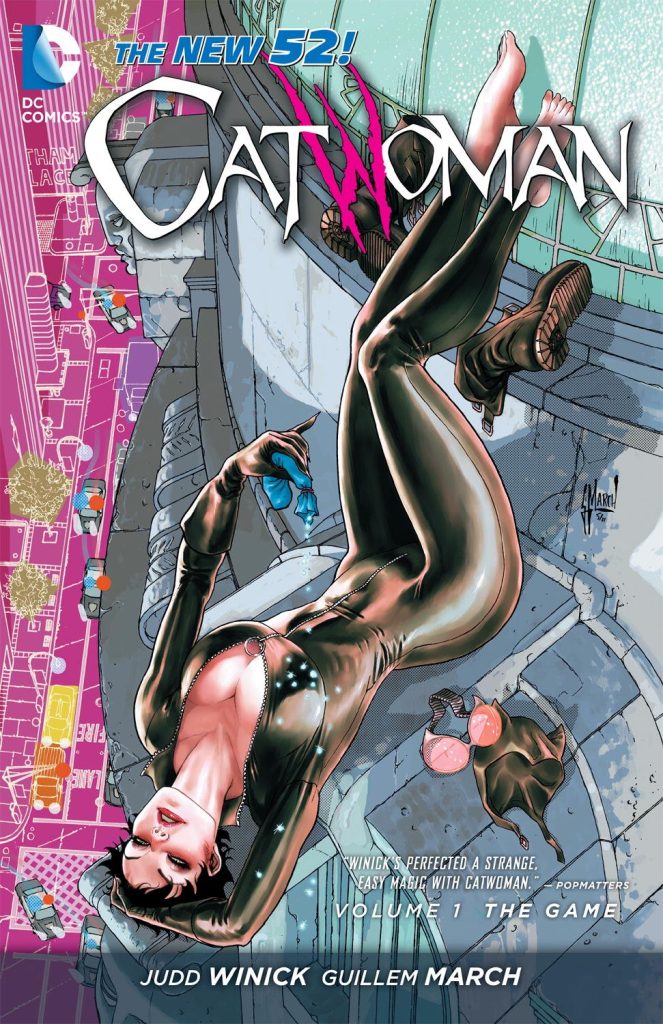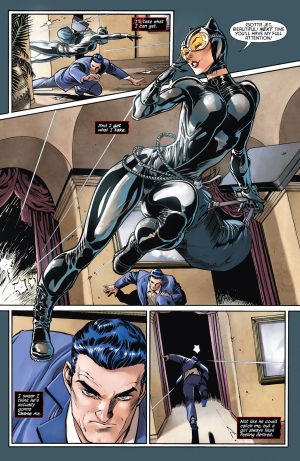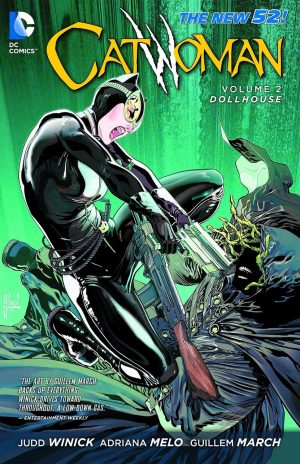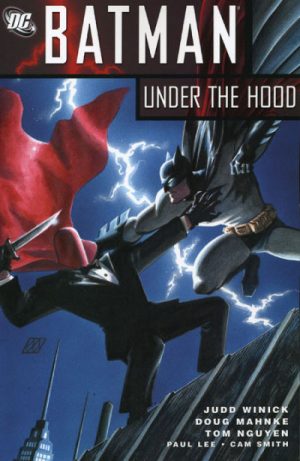Review by Frank Plowright
Back when The Game was released, a major point of contention was that not only do Catwoman and Batman have a relationship, they also have a sex life. It manifests in some rolling around on the carpet as the costumes come off, or at least most of them.
This isn’t a complete return to the bad old exploitative Catwoman of old, but under Guillem March over the first couple of chapters it’s a step back in that direction. She operates in seedy clubs where women are seen to be exploited, that fetishised costume sure is shiny, and she’s twisted into some impossible poses. That she sees herself as a protector of exploited women isn’t mitigation, it’s having the cake and eating it. All of which is a shame, as March’s art is otherwise extremely good, telling the story cinematically by placing readers in the middle of whatever action’s happening, and supplying clothing and surroundings with considerable detail. It’s going the extra mile, and so it’s pleasing that the areas of concern are toned down after a couple of chapters.
The Game was part of DC rebooting their entire line, but relationship with Batman apart, this is barely removed from the Selina Kyle known of old. Judd Winick hints at a slightly revised background, and introduces others from that time, but the changes are barely noticeable. She’s portrayed as enjoying theft and manipulation, and as a risk taker. That final quality has appalling consequences as Catwoman picks the wrong people to set up in a revenge plot, and compounds it with another mistake. It all makes for a highly charged series of events leaving Selina very much on the back foot despite the way it may occasionally seem.
Winick makes good use of Gotham’s notoriously corrupt police department, and both villains appearing here are new creations, although neither seem to have caught on with readers as they’ve hardly been high profile since. It’s all very readable and extremely fast paced, so the indications are good for Dollhouse.





